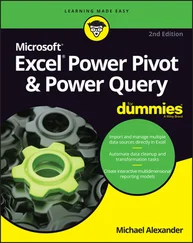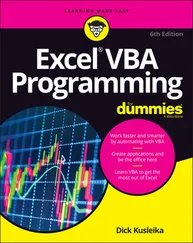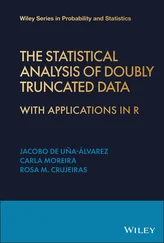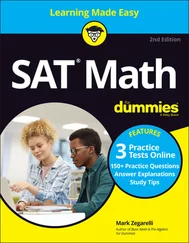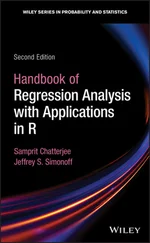334 338
335 339
336 340
337 341
338 342
339 343
340 344
341 345
342 346
343 347
344 348
345 349
346 350
347 351
348 352
349 353
350 354
351 355
352 356
353 357
354 358
355 359
356 360
357 361
358 363
359 364
360 365
361 366
362 367
363 368
364 369
365 370
366 371
367 372
368 373
369 374
370 375
371 376
372 377
373 378
374 379
375 380
376 381
377 382
378 383
379 384
380 385
381 386
382 387
383 388
384 389
385 390
386 391
387 393
388 394
389 395
390 396
391 397
392 398
393 399
394 400
395 401
396 402
397 403
398 404
399 405
400 406
401 407
402 408
403 409
404 410
405 411
406 412
407 413
408 414
409 415
410 416
411 417
412 419
413 420
414 421
415 422
416 423
417 424
418 425
419 426
420 427
421 428
422 429
423 430
424 431
425 432
426 433
427 434
428 435
429 436
430 437
431 438
432 439
433 440
434 441
435 442
436 443
437 444
438 445
439 446
440 447
441 448
442 449
443 450
444 451
445 452
446 453
447 454
448 455
449 457
450 458
451 459
452 460
453 461
454 462
455 463
456 464
457 465
458 466
459 467
460 468
461 469
462 470
463 471
464 472
465 473
466 475
467 476
468 477
469 478
470 479
471 480
472 481
473 482
474 483
475 484
476 485
477 486
478 487
479 488
480 489
481 490
482 491
483 492
484 493
485 494
486 495
487 496
488 497
489 498
490 499
491 501
492 502
493 503
494 504
495 505
496 506
497 507
498 508
499 509
500 510
501 511
502 512
503 513
504 514
505 515
506 516
507 517
508 518
509 519
510 520
511 521
512 522
513 523
514 524
515 525
516 526
517 527
518 529
519 530
520 531
521 532
522 533
523 534
524 535
525 536
526 537
527 538
528 539
529 540
530 541
531 542
532 543
533 545
534 546
535 547
536 548
537 549
538 550
539 551
540 552
541 553
542 554
543 555
544 556
545 557
546 558
547 559
548 560
549 561
550 562
551 563
552 564
553 565
What? Yet another statistics book? Well, this is a statistics book, all right — but in my humble (and thoroughly biased) opinion, it's still, after four editions, not just another statistics book.
What? Yet another Excel book? Same thoroughly biased opinion (still, after four editions) — it's not just another Excel book. What? Yet another edition of a book that’s not just another statistics book and not just another Excel book? Well … yes. For the fifth time, you got me there.
Here's the story — for the previous four editions and for this one. Many statistics books teach you the concepts but don't give you a way to apply them — which often leads to a lack of understanding. With Excel, you have a ready-made package for applying statistics concepts.
Looking at it from the opposite direction, many Excel books show you Excel's capabilities but don't tell you about the concepts behind them. Before I tell you about an Excel statistical tool, I give you the statistical foundation it's based on. That way, you understand the tool when you use it — and you use it more effectively. I didn’t want to write a book that's just “select this menu” and “click this button.” Some of that is necessary, of course, in any book that shows you how to use a software package. My goal was to go way beyond that.
Neither did I want to write a statistics “cookbook” — when-faced-with-problem-#862-use-statistical-procedure-#412. My goal was to go way beyond that, too.
This book isn't just about statistics or just about Excel — it sits firmly at the intersection of the two. In the course of telling you about statistics, I cover every Excel statistical feature. (Well, almost every one . I did leave one out and, truth be told, I left it out of the first four editions, too. It's called “Fourier Analysis.” All the necessary math to understand it would take an entire book to present, and you may never use this tool anyway. Perhaps I’ll cover it in the infinitieth edition… .)
Although statistics involves a logical progression of concepts, I’ve organized this book so that you can open it up in any chapter and start reading. The idea is for you to find what you're looking for in a hurry and use it immediately — whether it's a statistical concept or an Excel tool.
On the other hand, reading from cover to cover is okay if you're so inclined. If you're a statistics newbie and you have to use Excel for statistical analysis, I recommend you begin at the beginning — even if you know Excel pretty well.
What’s New in This Edition
I wanted to add a dimension or two to this fifth edition, and I think I’ve done just that.
In addition to the usual material on Windows and on the Mac, I also cover — wait for it — the iPad! The iPad doesn’t support Excel’s major statistical package (the Analysis Toolpak), but other packages fill the void, as you’ll see. I think you’ll find that Excel on the iPad is a powerful tool for statistics. (I’m working with a fourth generation, 12.9-inch iPad Pro. If you’re working with a different model, your mileage may vary.)
Throughout this book, then, you see material about Excel on the Mac and on the iPad — particularly when MacOS and iPadOS differ substantially from Windows. Otherwise, it’s been my experience that Mac users and iPad users are a hearty lot and know how to adapt. (So? Enough … Apple polishing?)
Making its debut in this edition is the increasingly popular topic of logistic regression (see Chapter 21).
In Chapter 20, I’ve added a section on simulating a business. It’s my first foray into Excel’s What If analysis tools.
In this edition, I’ve moved the discussion about some of the lesser used charts from Chapter 3to an online appendix you can download at www.dummies.com/go/statisticalanalysiswexcelfd5e .
Speaking of online appendixes, I’ve moved an online appendix from the fourth edition, “When Your Data Live Elsewhere,” into this edition. I think it’s useful information you should have at your fingertips. Also moving from online to printed page is an appendix called “Tips for Teachers (And Learners).”
And finally, due to popular demand, you can download this edition’s spreadsheets! (Again, available at www.dummies.com/go/statisticalanalysiswexcelfd5e .) The spreadsheets contain just the data. You still have to follow the steps I provide to complete the analyses.
What’s New in Excel (Microsoft 365)
I work with the cloud-based subscription version of Excel, which is part of Microsoft 365. As part of the subscription, I receive updates you may not have if you work with Excel 2021 — a stand-alone product. Were you to examine the two incarnations of Excel up close and personal, you probably wouldn’t find much difference in functionality. (But see the section on array functions in Chapter 2.)
Читать дальше





